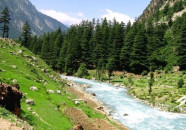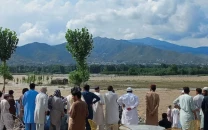Simplicity, faith drive Thal endurance
Their music, rich in melody and culture, resonates in the vast expanse of Thal.

Stretching from central to South Punjab, Thal, Pakistan's smallest desert, is a symbol of enduring human spirit, long thriving in an environment fraught with challenges.
Most of the land of this over 20,000 square kilometres stretch is arid, making parts of Bhakkar, Khushab, Layyah, Mianwali, Muzaffargarh and Jhang districts. There are also some plain irrigated areas where people grow food crops like chickpea and wheat. In raid-fed areas, fodder crops are cultivated but their survival depends on rains.
Dr Ashu Lal, a noted intellectual from Layyah district, narrated that in ancient times Thal's people used to sing folk songs to seek divine intervention for rainfall and in some areas they still cling to this tradition. "So the singing for them was like a prayers to save them from harsh climatic conditions."
Their music, rich in melody and culture, resonates in the vast expanse of Thal, as a spiritual and practical expression of hope for better days.
The British rulers described the desert as a "tract of barrenness," inhabited by scattered clans, sustaining through rudimentary agriculture and nomadic grazing.
Local people find solace in vibrant oral tradition, colourful folk tales and deep spiritual connections to Sufi saints, shaping a cultural identity rooted in simplicity, endurance and faith.




















COMMENTS
Comments are moderated and generally will be posted if they are on-topic and not abusive.
For more information, please see our Comments FAQ